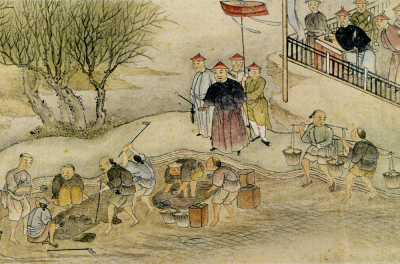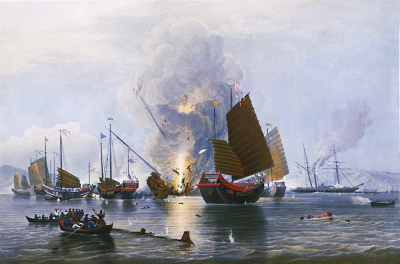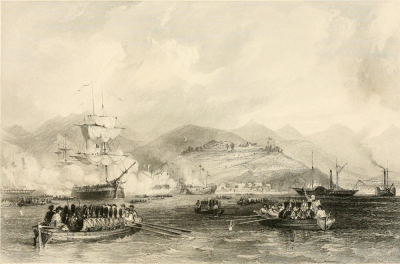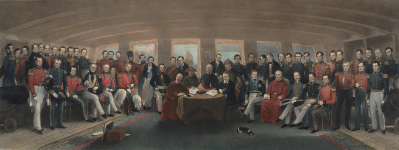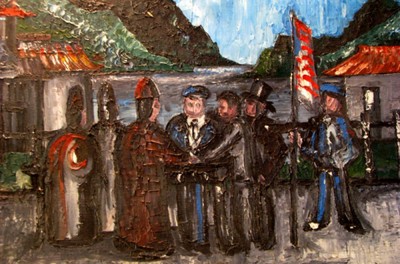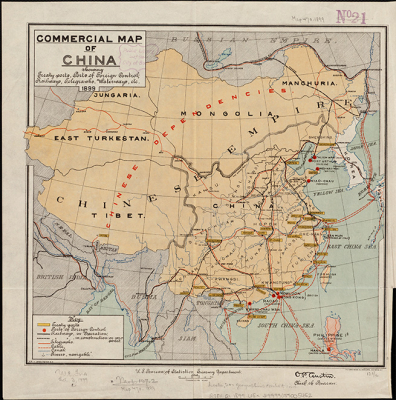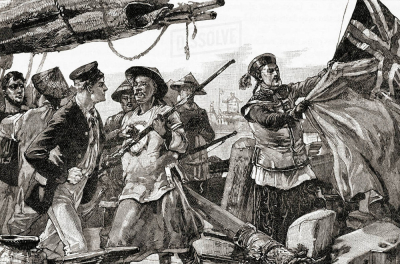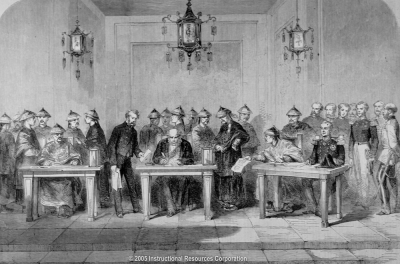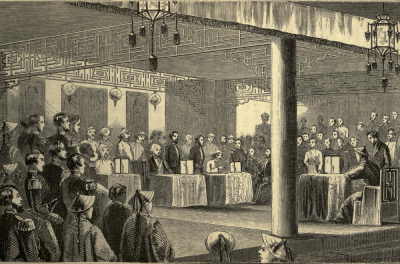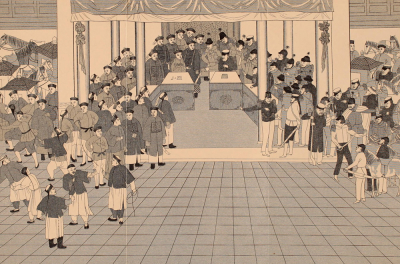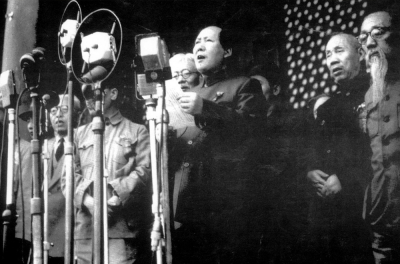Understanding Modern Chinese History
Unequal Treaties in Modern Chinese History
The 1st Opium War (1839 – 1842) |
||
|
The illegal trade of opium had severely harmed China’s economy and the health of Chinese people. China attempted to suppress the opium trade. In 1839, Lin Zexu was appointed by the Daoguang Emperor to halt the opium trade and the British opium traders were forced to hand over the opium. By 3 June, Lin had confiscated and destroyed more than 20,000 chests of opium in Humen. In response to the actions of the Qing government, the British government decided to send an army to China. Britain defeated China in 1842, and China was forced to sign the Treaty of Nanking. |
||
|
Photo in the public domain |
Photo in the public domain |
Photo in the public domain |
|
The left picture is about Lin Zexu destroying opium at Humen. |
||
|
(Hsu, 2000; Li, 2016; Spence, 1990; Twitchett & Fairbank, 1978) |
||
The Treaty of Nanking (1842) |
|
The “Treaty of Nanking” was signed on 29 August 1842 by the Qing government and Britain. Besides reparations, the Qing government agreed to cede the territory of Hong Kong Island; establish a “fair and reasonable” tariff; permit British merchants to trade at the five “treaty ports” of Guangzhou, Fuzhou, Xiamen, Ningbo, and Shanghai; and communicate directly with local Chinese officials. British citizens were allowed to enjoy rights in China that the Qing government could offer to citizens of other countries after signing the supplementary Treaty of the Bogue. |
|
Photo in the public domain |
|
The signing of the “Treaty of Nanking” between Sir Henry Pottinger (British representative) and Qiying, Yilibu, and Niu Jian (Qing representatives). |
The Treaty of Wanghia (1844) |
|
The “Treaty of Wanghia” (also known as the Treaty of Peace, Amity, and Commerce) was negotiated and signed by the Qing government and the United States on 3 July 1844. The terms of the treaty imposed fixed tariffs on trading ports, allowed American citizens to purchase land and establish churches and hospitals in the treaty ports, and granted the United States the most-favored-nation status and the right to modify the treaty 12 years after it was approved. |
|
Oil picture painted by Robert Huffstutter licensed under CC BY-NC 2.0. |
|
The picture above depicts the treaty of Wanghia, between the Qing government and the United States. |
The Treaty of Whampoa (1844) |
|
On 24 October 1844, the Treaty of Whampoa was signed by the Qing government and France on a French warship, L'Archimede, at Whampoa Port in Guangzhou. France was granted the privileges given to Britain in the Treaty of Nanking and allowed to anchor warships in ports to protect their trade and sailors. In addition, stipulations allowed for the free propagation of Catholicism in China and enabled France to set up consulates in any of the five treaty ports for the ease of trading activities, to re-establish extraterritoriality, and to protect the graveyards of French churches. |
|
Photo in the public domain |
|
Under the “Treaty of Whampoa”, Guangzhou and Shanghai were two of the five ports in which French merchants were allowed to trade. |
The 2nd Opium War (1856 – 1860) |
|
|
In 1854, Britain and France demanded a re-modification of the Treaty of Nanking but were rejected by the Qing government. In the first phase of the war, the Anglo-French army invaded Guangzhou and Dagu, and defeated the Chinese army. Qing was compelled to sign the Treaty of Tientsin in 1858. In the second phase of war in 1859, the Anglo-French army invaded Dagu, Tientsin, and Peking, and burned the Old Summer Palace. The Convention of Peking was signed in 1860 as a war settlement. |
|
|
Photo in the public domain |
Photo in the public domain |
|
The left picture is about the British government claimed that Chinese officers tore down the British flag on the Arrow. |
|
The Treaty of Tientsin (1858) |
|
|
The Treaty of Tientsin was signed by the Qing government and Britain, France, Russia, and the US in 1858. Major provisions in the British treaty included establishing a British ambassador in Beijing who would be accompanied by their family and staff, enabling the unrestricted and protected propagation of Christianity, and granting extraterritoriality to Britain. Additional treaty ports were forced to open, including Chefoo and Chinkiang. |
|
|
Photo in the public domain |
|
|
The “Treaty of Tientsin” was signed between China and the four nations of Russia, Britain, France, and the United States at Tientsin, China. |
|
The Convention of Peking (1860) |
|
|
The Convention of Peking was signed by the Qing government and Britain, France, and Russia in 1860. Russia gained the most-favored-nation status from China, which included approximately 400,000 square miles of territory, commercial concessions, open trade, consulates, and residences. Britain gained a total increase of eight million taels indemnities and a ceded part of the Southern Kowloon Peninsula. In addition, Tientsin was opened to foreign trade and residence, and French missionaries were allowed to own properties in the interior of China. |
|
|
Photo in the public domain |
|
|
The “Convention of Peking” was signed by the Qing government and Britain, France, and Russia. |
|
The Establishment of the People's Republic of China (1949) |
|
|
The Communist troops liberated Nanjing in April 1949; this represented the withdrawal of the Nationalist Party. On 1 October 1949, Mao Zedong, the Chairman of the Chinese Communist Party (CCP), proclaimed the establishment of the People’s Republic of China at Tiananmen Square. It marked the end of the Chinese Civil War and the start of the CCP’s administration in mainland China. The Nationalists fled to Taiwan, and the Communists liberated the whole of mainland China. |
|
|
Photo in the public domain |
|
|
Mao Zedong declared the establishment of the People’s Republic of China at Tiananmen Square. |
|



